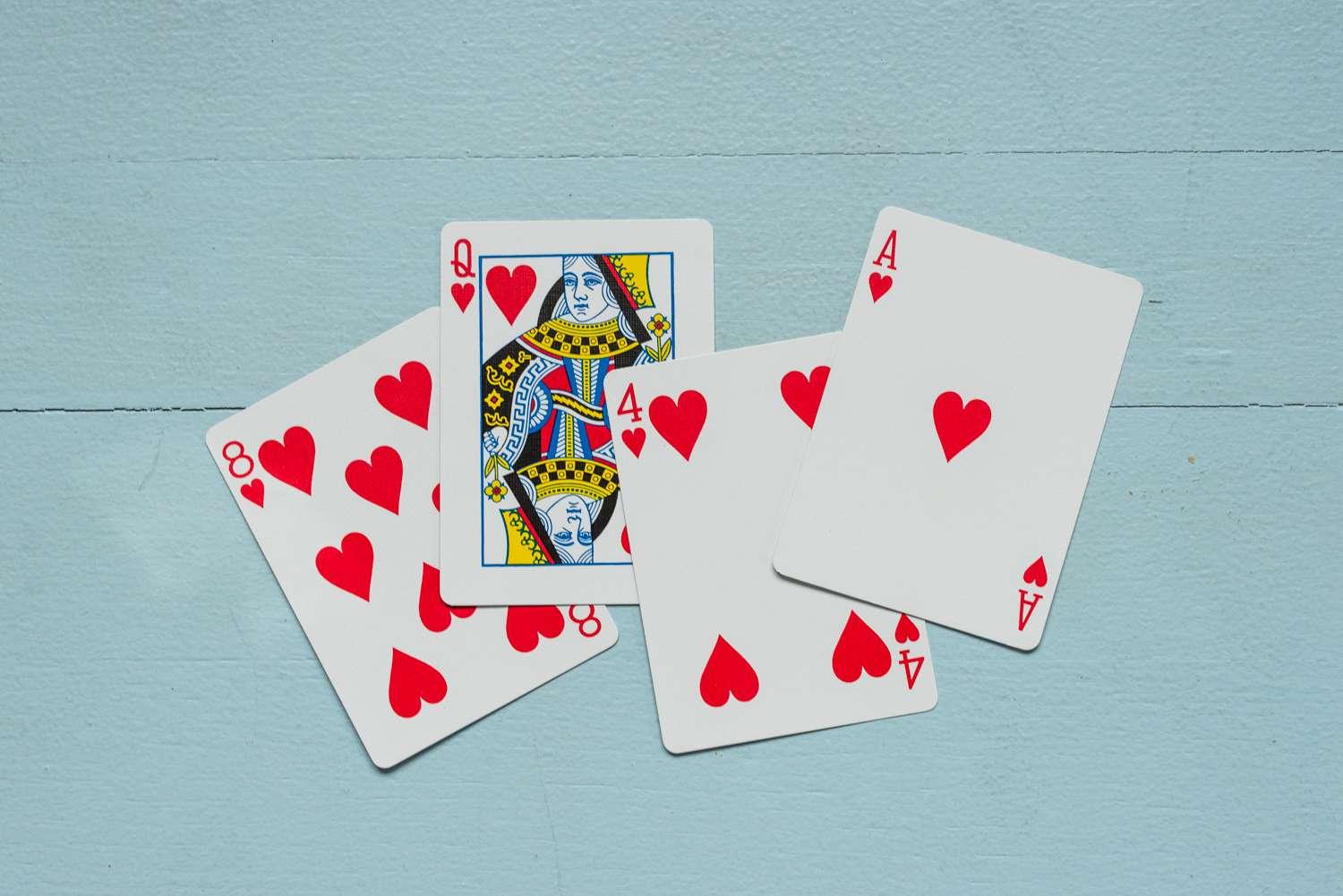The game of Hearts has captured the hearts of card game enthusiasts for generations. It’s a classic trick-taking game that combines elements of strategy, skill, and luck. This article will help you uncover the fascinating history of Hearts.
We’ll also delve into the basic rules as well as explore winning strategies. So sit back and relax while we dive in the world that is Hearts.
The history of Hearts, the card game
The history of Hearts, like many card games, is shrouded in a bit of mystery and lacks a definitive origin story. However, it is believed to have evolved from a family of trick-taking card games that were popular in Europe during the 17th and 18th centuries. Games such as Reversis, Black Lady, and Black Maria all share similarities with Hearts and likely contributed to its development.
It was in the United States that Hearts gained significant popularity, particularly during the late 19th century. The game found its way into social gatherings, card clubs, and even gambling establishments. Its appeal grew as it became a popular pastime for families and friends to gather and enjoy friendly competition.
During the early 20th century, Hearts continued to flourish, with players often engaging in heated matches and developing their own strategies. It was commonly played in homes, community centers, and even on riverboats, as gambling was prevalent in some regions.
Hearts received a significant boost in the digital age with the rise of personal computers. Microsoft’s Windows operating system featured a built-in Hearts game, which introduced the game to a whole new generation of players. The accessibility and convenience of playing Hearts on computers and later on smartphones contributed to its enduring popularity.
Microsoft’s built-in Hearts game
The online gaming revolution further propelled Hearts into the virtual world. Players from around the globe could now connect and compete in online multiplayer matches, challenging opponents with varying skill levels.
Online platforms and mobile apps dedicated to card games allowed enthusiasts to engage in Hearts anytime, anywhere, fostering a vibrant community of players.
The enduring appeal of Hearts lies in its combination of strategy and psychology. The game requires players to carefully manage their hand, track the cards played by others, and make decisions based on the potential risks and rewards.
The element of unpredictability, as players attempt to avoid penalty cards while forcing opponents into undesirable moves, adds a thrilling dynamic to the gameplay.
Over the years, Hearts has become not only a beloved game but also a source of inspiration for variations and adaptations.
Some players introduced additional rules or modified scoring systems to add new layers of complexity or tailor the game to their preferences. These variations continue to evolve, keeping Hearts fresh and engaging for players of all skill levels.
In conclusion, the history of Hearts traces back to European trick-taking games and gained widespread popularity in the United States during the 19th century.
Its journey continued with the advent of computers and the digital age, making it a staple in the gaming community.
Today, Hearts remains a timeless classic, enjoyed by players worldwide, and its rich history continues to shape its evolution.
The Rules of Hearts, the card game
Objective: The goal of Hearts is to have the lowest score at the end of the game. The game ends when a player reaches a predetermined score limit, often 100 points.
Card Values: Hearts is typically played with a standard deck of 52 cards. Each heart card is worth one penalty point, while the Queen of Spades is worth thirteen penalty points.
Dealing: The dealer distributes all the cards, starting with the player to their left, in a clockwise direction. The entire deck should be distributed, with each player receiving 13 cards.
Passing Cards: After the cards are dealt, players must select three cards from their hand to pass to another player. The direction of the pass alternates with each hand.
Playing Tricks: The player holding the two of clubs begins the first trick, and each player must follow suit if possible. The highest card of the leading suit wins the trick, and the winner of the trick leads the next one.
Breaking Hearts: Players are not allowed to play a heart card or the Queen of Spades in the first trick unless they have no other options. This is known as “breaking hearts.”
Scoring: After all the tricks are played, players count the number of penalty points in the hearts they’ve collected and the Queen of Spades. These points are added to their total score. The game continues until a player reaches the score limit, and the player with the lowest score is declared the winner.
With the rules established, you should be equipped to play Hearts online, or you can read further for tips and tricks.
Hearts Game Strategy
Developing a solid strategy is key to achieving success in Hearts. While there is an element of luck involved, implementing effective tactics can greatly enhance your chances of minimizing penalty points and outsmarting your opponents. Here are some strategies to consider:
Card Management:
Carefully managing your hand is crucial in Hearts. Avoid collecting hearts and the Queen of Spades whenever possible, especially in the early stages of the game. Look for opportunities to discard penalty cards on tricks where you are not likely to win.
Counting Cards:
Pay close attention to the cards played by other players. By keeping track of which hearts have been played, you can better assess the risks involved in playing certain cards. This information can guide your decision-making process and help you avoid unnecessary penalty points.
Timing:
Timing plays a vital role in Hearts. Holding onto high-ranking hearts until other players have played their hearts or the Queen of Spades can reduce the risk of gaining penalty points. It’s often beneficial to play hearts strategically when you know other players are likely to have to take the trick.
Also read: 5 Beautiful Sites Where You Can Play Backgammon in Your Browser
The Void Strategy:
If you have a void (no cards) in a particular suit, you can play strategically by discarding penalty cards of that suit. This forces other players to play their high-ranking cards of that suit, potentially gaining penalty points while you remain safe.
The Safe Hand Strategy:
In some situations, it might be best to play conservatively and avoid taking any tricks.
This strategy is particularly useful when you’re close to the score limit, and other players are at a higher risk of accumulating penalty points. Play low-ranking cards when possible and aim to pass penalty cards to opponents.
Assessing Risk:
Evaluate the potential risks and rewards of each move. Consider the current scores, the cards played, and the cards remaining in the deck. Sometimes taking a calculated risk, such as playing a heart to force a high-ranking card out of an opponent’s hand, can be advantageous.
Psychological Warfare:
Hearts is not just about playing the cards; it also involves understanding the psychology of your opponents. Observe their patterns, anticipate their strategies, and use that knowledge to your advantage. Mislead opponents by playing cards that may trick them into taking the trick or force them to make suboptimal moves.
Adaptability:
Remain flexible and adapt your strategy based on the flow of the game. Recognize when a particular strategy is not working and be willing to adjust your approach accordingly.
Remember, mastering Hearts takes practice. The more you play and analyze different situations, the better you’ll become at anticipating moves, making strategic decisions, and ultimately achieving success in this captivating card game.
Conclusion
Hearts is a captivating card game that combines strategy, skill, and a touch of luck. By understanding the rules, implementing winning strategies, and appreciating the game’s rich history, you can master the art of playing Hearts.
So gather your friends or challenge opponents online, and embark on an exciting journey through the world of Hearts, where every trick counts and every move can make a difference.
Article contributed by Neal Taparia.
About the author: Neal Taparia is the co-founder of Imagine Easy Solutions, a portfolio of online educational services that reaches over 30 million students yearly. Neal is also the co-founder of Unwind Media, his venture that provides people with amazing websites where they can play card games and other online games for free.
Also read: 5 Online Minesweeper Games with Unique Themes and Gameplay
Follow TechTheLead on Google News to get the news first.



















